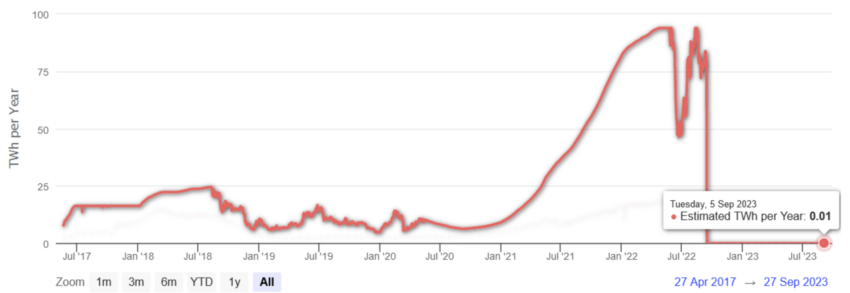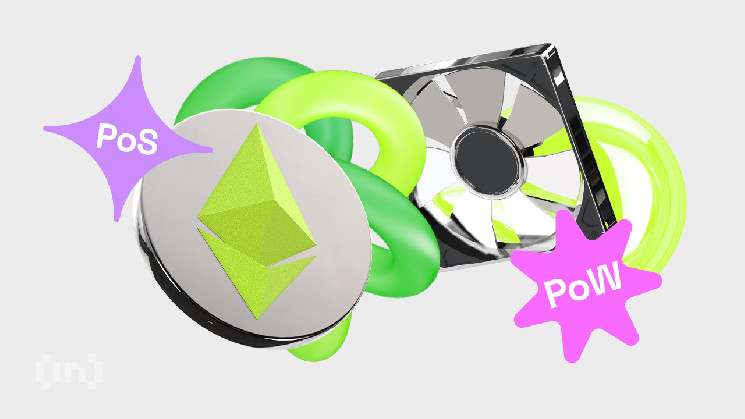Blockchains rely on consensus mechanisms to verify transactions, but why does it matter if a network is? proof of work (PoW) or proof of stake (PoS)? In this guide, we will break down PoW vs PoS in simple terms, explaining how each method secures the blockchain while discussing the pros, cons and features of each method. Here’s what you need to know in 2024.
In this guide:
- What is proof of work (PoW)?
- What is proof of stake (PoS)?
- Proof-of-work versus proof-of-stake: comparison
- Challenges associated with PoW
- Challenges associated with PoS
- Which consensus is better: PoS or PoW?
- Frequently asked questions
What is proof of work (PoW)?
Proof-of-work (PoW) is a consensus mechanism where miners use computing power to solve complex mathematical puzzles and validate transactions on a blockchain. This process ensures that the network is secure and decentralized due to the competition of miners.
Key features of PoW
- Mining-based validation: Miners compete to solve cryptographic puzzles, where the winner gets to validate a block and receive rewards.
- Energy intensive: Just like a giant puzzle match requires energy, PoW uses a lot of computing power, making it energy intensive.
- Certainty through difficulties: The complexity of the puzzles makes it very difficult for anyone to tamper with the network. Any change requires solving all previous puzzles, which is practically impossible.
How PoW ensures security and decentralization
PoW provides security by making it extremely costly to attempt to attack or manipulate the network. The resources required to cheat are so high that it is not worth the effort. At the same time, PoW ensures that anyone with the right hardware can participate in mining, so that no single entity controls the network.
Examples of blockchains using PoW
- Bitcoin: The first cryptocurrency to implement PoW, Bitcoin’s decentralized network relies on miners to secure the blockchain.
- Litecoin: Litecoin is a fork of Bitcoin and uses PoW, but offers faster transaction times, making it more suitable for smaller, everyday transactions.
What is proof of stake (PoS)?
Proof-of-stake (PoS) is a consensus mechanism where validators are chosen to create new blocks based on the amount of cryptocurrency they hold and are willing to stake as collateral. This method reduces the need for energy-intensive computations and increases network efficiency.
Key features of PoS
- Staking replaces mining: Instead of miners, PoS uses validators who lock up (or stake) their coins for a chance to validate blocks.
- Energy efficiency: Because PoS does not rely on heavy computation, it consumes significantly less energy than PoW.
- Validator selection based on stake: Validators are chosen based on the number of coins they have staked, which encourages retention and security of the network.
Staking and validator selection process
In PoS, validators lock up a portion of their cryptocurrency as collateral. If selected, they validate new transactions and add them to the blockchain. If they act dishonestly, their staked coins can be cut (lost) so that participants adhere to the rules. This system favors those who have a large stake, but also allows smaller holders to participate.
Examples of blockchains that use PoS
- Cardano: Cardano is a leading PoS blockchain known for its research-driven approach and emphasizes security and sustainability through staking.
- Ethereum: After transitioning from PoW in 2022, Ethereum now uses PoS, significantly increasing energy efficiency and scalability.
Proof-of-work versus proof-of-stake: comparison
While the differences can always be described in detail, here is a brief table for reference, which may help you better understand how they all work:
Challenges associated with PoW
While proof-of-work (PoW) is widely recognized for its security and decentralization, it poses significant challenges. Energy consumption, centralization risks, and slow transaction speeds pose limitations to scalability.
High energy consumption
One of the most discussed disadvantages of PoW is its impact on the environment. The energy required to solve cryptographic puzzles is enormous, leading to sustainability concerns. This has led to discussions about greener alternatives in blockchain technology.
Bitcoin’s enormous transaction, trust, and security benefits are offset by the actively resource-intensive design of the transaction verification process, which now threatens our ability to survive in a climate-dependent world.
Truby, J. (2018). Decarbonizing Bitcoin: Science Direct
The graph below shows the change in Ethereum’s energy consumption after moving from a PoW consensus mechanism to PoS.

Ethereum energy consumption: Limenet.tech
Centralization risks due to mining pools
As mining becomes more competitive and hardware intensive, smaller miners are struggling to compete. This has led to the rise of mining pools: groups of miners who combine their resources to solve puzzles together. While this makes mining more efficient, it also risks centralizing power in the hands of a few large pools, which could undermine PoW’s decentralization principle.
Slower transaction times
PoW networks like Bitcoin process transactions at a slower pace compared to newer consensus mechanisms. Because miners need time to solve each puzzle, block generation can take longer, causing delays in transaction validation, especially during periods of high network traffic.
Challenges associated with PoS
Proof-of-stake (PoS) is praised for being energy efficient and scalable, but it faces its own set of challenges. These include:
- Risks of centralization
- Potential security issues
- The complexity of staking
Risks of centralization due to concentration of wealth
In PoS systems, validators with larger amounts of cryptocurrency have a higher chance of being selected to validate blocks. This can lead to a situation where a small group of wealthy participants controls a significant portion of the network, raising concerns about centralization.
Security issues (long-range attacks, mitigating risks)
Although PoS is generally considered secure, it has its own vulnerabilities. One of those risks is a long-distance attack, in which an attacker rewrites history in the blockchain from far back.
To mitigate this, PoS systems implement slashing penalties for validators who act dishonestly. However, there is a risk that honest validators may be accidentally penalized, leading to the potential loss of staked coins.
Complexity of the staking process
Staking can be a complicated process, especially for beginners. Validators must understand how much to stake, manage the risks of cuts, and stay online to maintain their role in the network. Tits complexity may discourage smaller holders from participating, potentially putting the system in the hands of more experienced or wealthier users.
From 2024 onwards, various hybrid models will be investigated, combining aspects of both PoW and PoS. For example, projects like Kadena use PoW for security and PoS for governance to strike a balance between security and energy efficiency.
Which consensus is better: PoS or PoW?
There is no clear winner in this proof-of-work versus proof-of-stake debate; each has its strengths and weaknesses depending on the use case. However, as blockchain technology matures, PoS is gaining more attention for its energy efficiency, sustainability and scalability, while PoW remains trusted for its high level of security.
While many new chains are choosing to encourage greener credentials with PoS, the status of the original and most popular blockchain, Bitcoin, as PoW ensures that the more energy-intensive consensus mechanism will remain relevant in the long term.

